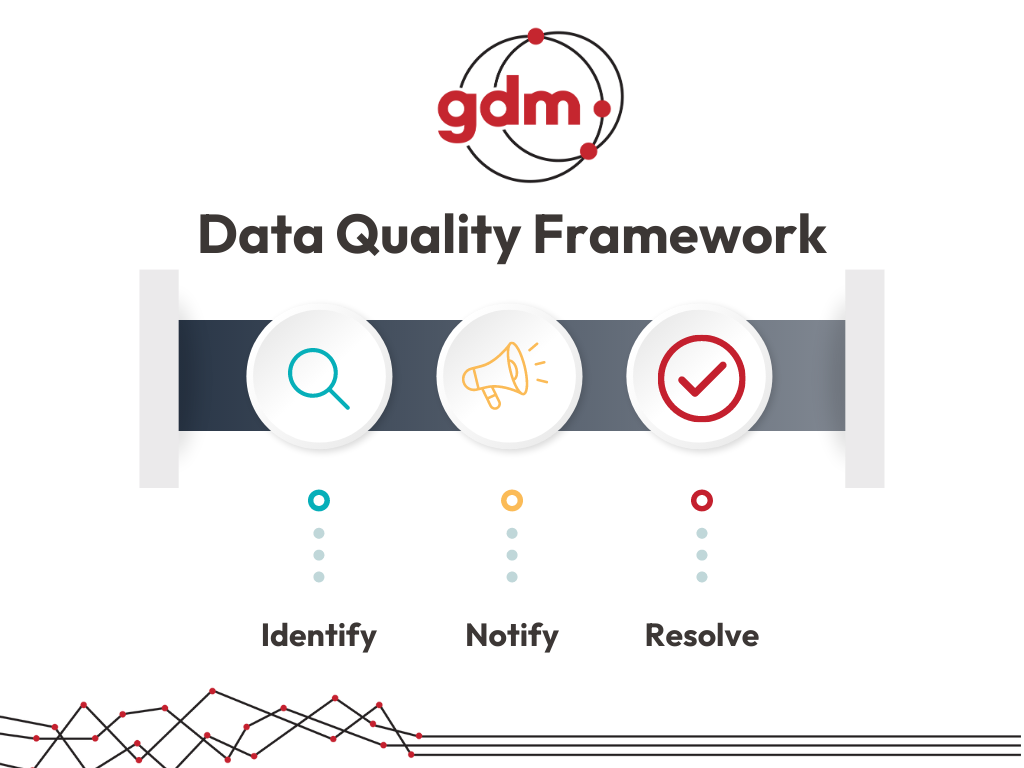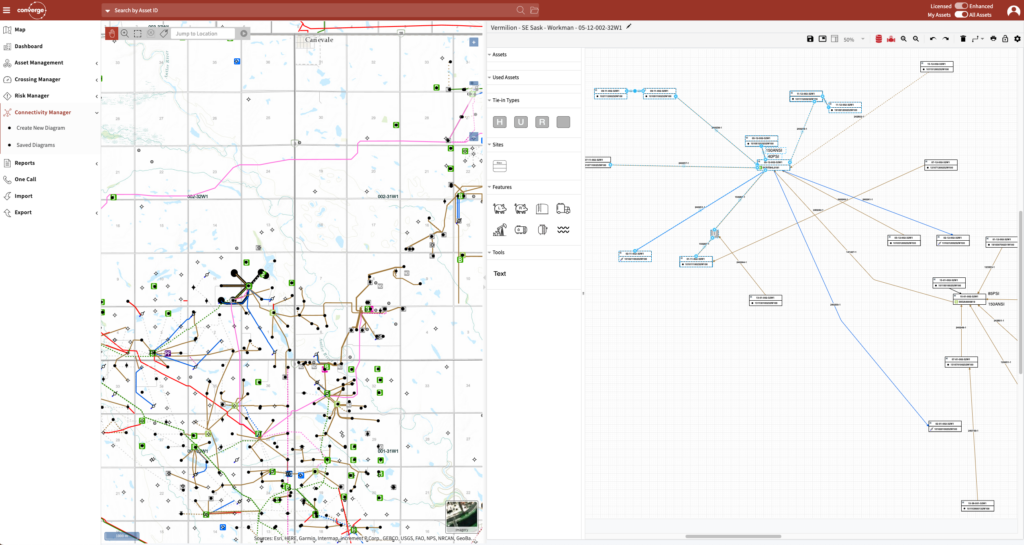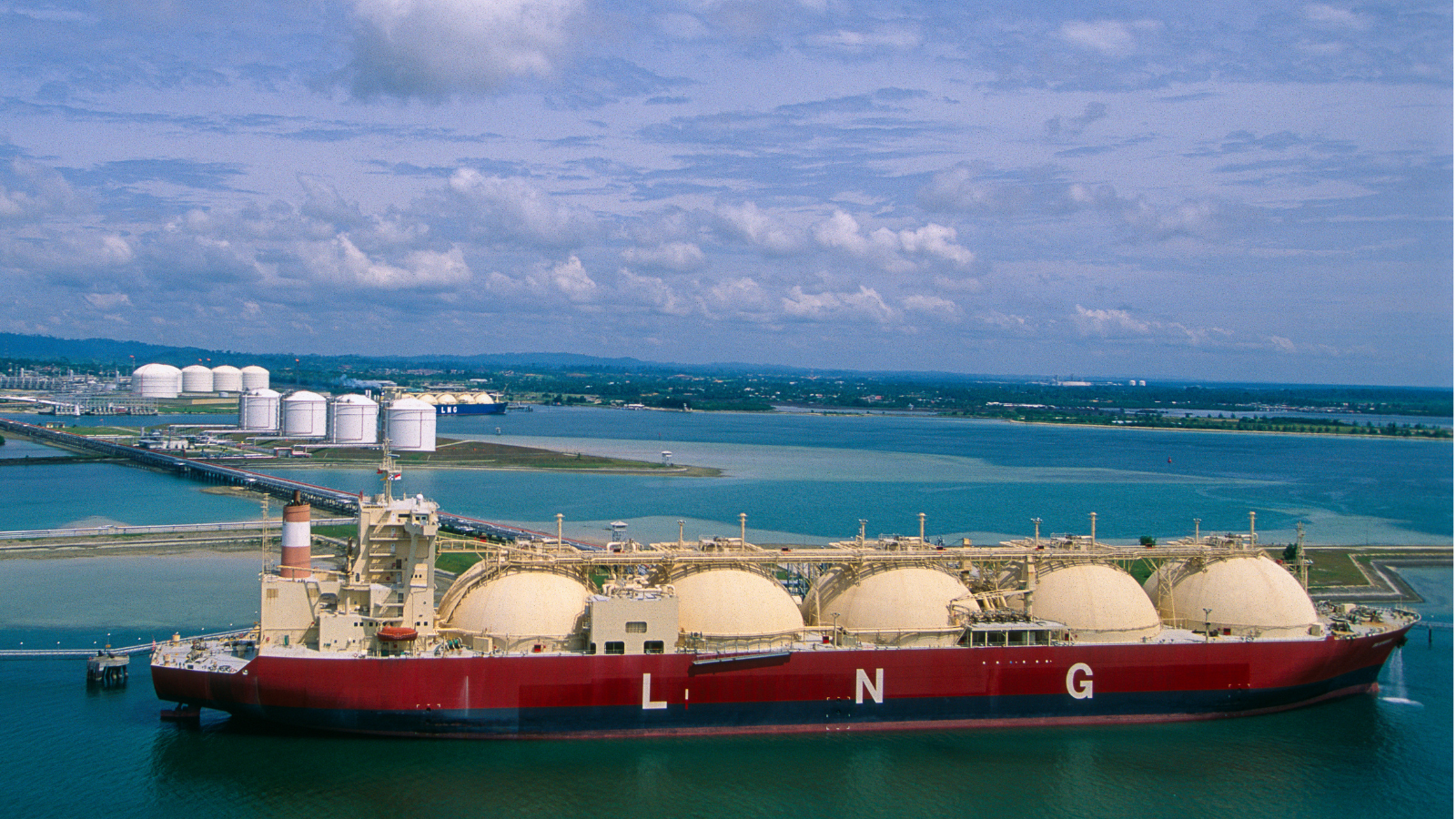by Jennifer Shea, Data operations Team Lead at GDM Inc.
In an era driven by data, ensuring its quality has become paramount for organizations across various industries. The energy sector is no exception. Trustworthy data is crucial for decision-making, improving operational efficiency, and enabling sustainable growth.
Data quality is driven by expectations. If we understand the expectation, we can identify if the current state meets those expectations or, if they aren’t met, understand what we need to do to achieve a positive result. To add to this complexity, the energy industry is crowded with multiple sources of data, which in turn means that different users have different challenges and expectations.
This is where the GDM Data Quality Framework comes in.
By definition, a data quality framework is “a systematic process that continuously profiles data for errors and implements various data quality operations to prevent errors from entering into the system.” By creating a loop to monitor and resolve issues, we create a way to consistently understand expectations and ensure that changes in the data are being measured and evaluated.
In terms of energy infrastructure, GDM’s framework includes an intertwining of qualitative and quantitative expectations to meet the distinctive needs our customers and the energy industry have. By coupling the qualitative and quantitative expectations, GDM can transform the data into higher levels of advanced information and intelligence, increasing data usability and making it more accessible across our user base.
The result means that our robust data quality framework ensures the best representation of an energy asset, so we can report on what exists, as well as derive information about the assets we manage.

Understanding your Data
When it comes to producing quality data it helps to know firstly, what is it you are trying to achieve with the data, thereby driving what information you need to collect. There is a direct correlation of quality consideration between understanding why you are collecting the data and what measurements you will use to quantify and qualify that your goals are being reached. For example, if we have accurate spatial information for a pipeline location and overlay that with geographic features associated with that area, we can derive knowledge about the current and potential environmental conditions of the asset.
Accuracy is the Foundation of Reliable Insights
Data accuracy is vital in the energy industry, where even minor discrepancies can lead to significant financial implications or operational disruptions. When it comes to energy infrastructure, no margin of error is too small. A matter of inches can cause a release.
Reliable insights are derived from accurate data, providing a solid foundation for building on existing information and assisting with decision-making processes. At GDM the spatial accuracy of pipeline assets is the foundation of connectivity, flow apportionment as well as the calculation of risk assessment and management. We use fields surveys and right-of-way data to improve the location of pipeline assets. These enhancements allow visualization, understanding and management of network connections as well as provide the foundation for calculating valuable analytics such as the identification of unmitigated risk.

Completeness Provides the Power of Holistic Understanding
Data completeness refers to having all the necessary information required for comprehensive analysis. In the energy industry, incomplete data can hinder critical evaluations, impairing the ability to identify trends, detect anomalies, or evaluate system performance.
The energy industry is a series of networks. To fully understand a network, we must understand each of the components involved. Each provincial regulator has a set of assets that it manages according to standards defined for that jurisdiction. Each asset has a set of attributes that defines its type and function in the network. Different attributes can be managed by different departments, or levels of government, in different formats. To properly understand and evaluate the complete picture of an asset, we aggregate data from multiple sources using custom ETL processes. By offering a complete data set, we can provide meaningful information that tells the full story of the asset’s life cycle.
Consistency is the Coherence for Cohesive Decision-Making
Consistency in data is essential for the energy industry, where different departments and stakeholders rely on interconnected datasets. Inconsistent data, characterized by variations in formats, units, or definitions, can lead to misinterpretations and erroneous conclusions. Implementing data standards and ensuring uniformity in data representation across systems and applications are crucial steps in maintaining consistency.
Different provincial regulators have their own way of managing data and we strive to represent the whole network in a way that all users will understand. Connecting assets within and between provinces allows for efficient data visualization and analysis. Reconciling disparate attribution between provinces allows us to build experience-driven solutions to query information, that can be applied across the whole network.
If data is consistent, users will be able to make the same decisions regardless of which application they are using. For example, GDM’s data is available in all industry-leading software and querying the license number, current ownership or status of a particular asset will return the same result regardless of the platform. In addition, GDM’s flagship software Converge gives users the ability to dig deeper into asset information and customize their daily work schedules and task lists.
Real-time Insights for Agile Operations
The energy industry is fast paced, making timely access to data indispensable. Real-time insights enable proactive decision-making, rapid response to market changes, and efficient energy management. Timeliness encompasses data collection, processing, and dissemination, ensuring that information is up-to-date, readily available, and easily accessible.
We are constantly working with clients to improve their data and provide the most current view of their assets. We apply daily updates to spatial and attribute information using surveys and field-sourced data. Through Converge, users can update their records at any time of day and see the changes immediately. The ability to integrate proprietary information into a complete collection of public data allows users to seamlessly view timely information when they need it.
Security and Privacy to Safeguard Sensitive Information
The energy industry deals with vast amounts of sensitive data, including customer information, trade secrets, and critical infrastructure details. It is important you have the tools that you feel are secure and protects this sensitive information from unauthorized access, breaches, or misuse. Robust cybersecurity measures, including encryption, entitlements (inter-company included), and regular audits, are crucial to ensure data security. Moreover, adhering to privacy regulations, such as the Canadian Anti-Spam Legislation, builds trust with customers and stakeholders, fostering a positive industry image. By safeguarding data integrity and privacy, energy companies can mitigate risks, enhance customer confidence, and maintain regulatory compliance.
In the energy industry, data quality is a prerequisite for efficiency, innovation, and sustainable growth. Embracing high-quality data unlocks transformative potential, enabling a future powered by reliable insights. For more information on how GDM’s Data Quality Framework or our comprehensive energy infrastructure data can assist you in decision-making, improving operational efficiency, and enabling sustainable growth, contact us.



